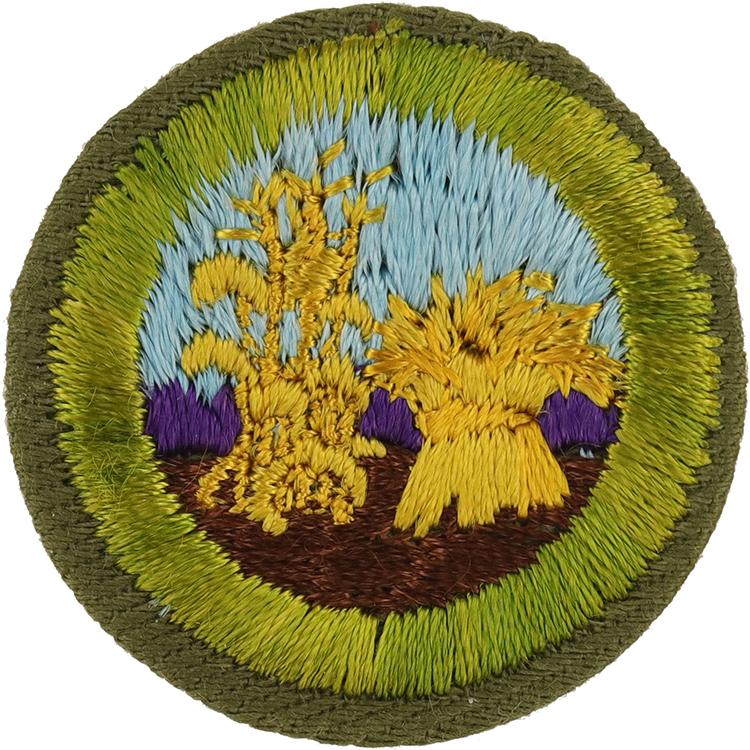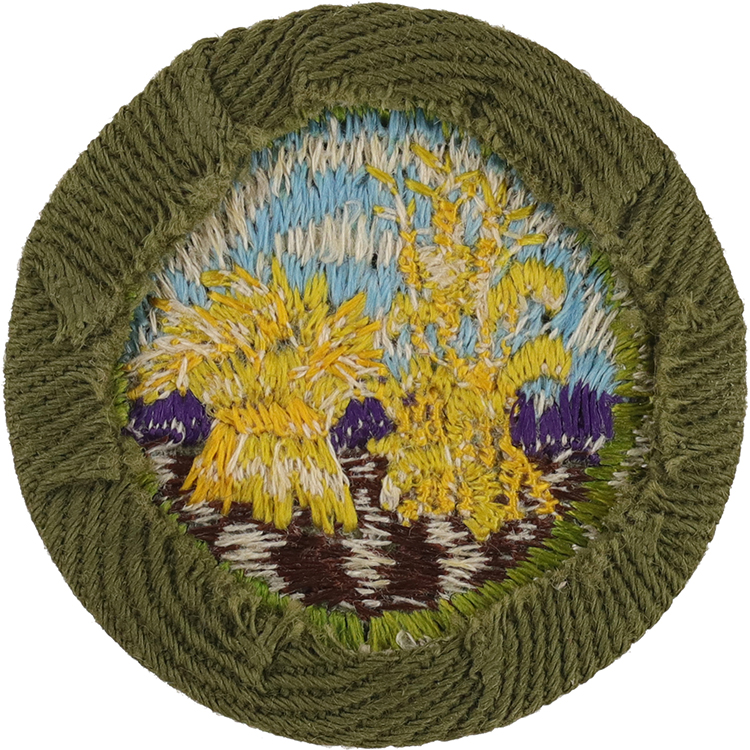
Fig. 1: SmaCer-E3-Front
- Cloth: Khaki right twill
- Embroidery: Cotton lock stitch

Fig. 2: SmaCer-E3-Reverse
- Back: Plain NO imprint with starch
Item Name: Small Grains 1959 - 1960
Item ID: SmaGra-E3
Collector Rating: 1
Pamphlets Used to Earn this Badge
Requirements November 1959 until June 1972
Qualify in all of the following:
1. On a map of the United States show where the following crops are grown in volume: rye, oats, barley, wheat, rice, flax, corn, soybeans, sorghum.
2. Run a germination test of 100 seeds each for two of the above crops raised in your area. Tell how you would treat these seeds to control disease.
3. Submit a sketch of a field on which grain is to be grown, showing how you would control soil erosion. Describe crop rotation, strip farming and contour farming.
4. Demonstrate in an outdoor seedbed or large box filled with soil the preparation of a seedbed and plant wheat and oats or any two small grains native to your section.
5. Explain steps farmers take to protect crops from diseases and insects and stored crops from rodents.
6. Make an exhibit of three or more grain crops and display at a school, fair, or Scouting event. Must include root systems, stems, leaves, and seeds.
And qualify in any three of the following:
7. Collect, bottle, and label samples of three grain seeds grown in your area. Mark on label the variety, where grown, and the number of days from planting to harvest.
8. Do a soil conservation project; describe how it was done and give the results.
9. For two grains grown in your area, explain how you would prepare the field. Give dates and methods of planting and the amount of seed per acre; define "certified" seed.
10. Assist in harvesting a crop of grain; describe a combine and how it works.
11. Visit a grain elevator, a seed sales plant, or a grain marketing center. Take notes and write an acceptable article on what you learned.
12. Visit your grocery store and list the grain products sold; describe how one of these produces is manufactured.
13. Prepare and serve a hot cereal food at home or camp; describe protein and other food ingredients in cereal and grain products and tell how they contribute to health.
-------
* As a 4-H'er, complete a club project in this subject. Or as an FFA member, meet these or equivalent requirements through the FFA supervised farming program.

